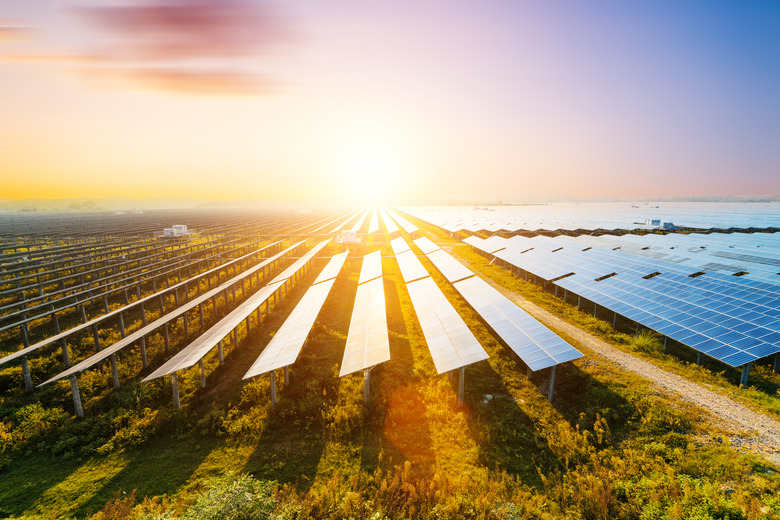Negative Effects Of Solar Energy
Solar energy, which provides clean energy from the sun, is booming in the United States and globally. The cost to install solar energy has dropped by more than 70 percent since 2010. In the last decade, solar has experienced an average annual growth rate of 68 percent. Many households and businesses that switch to solar energy save money and decrease their ecological footprint.
While there is no doubt solar energy can be an important solution for many of the world's energy problems, it's not a magic pill. Some studies show solar energy to have considerable environmental drawbacks.
Land Use
Land Use
Large utility-scale solar panels take up a lot of space, which can result in environmental degradation and habitat loss. Solar farms that cover a large amount of land are likely to have an impact on the local fauna and flora, particularly on birds. Solar farms can also inhibit local vegetation growth and damage agriculture. Unlike wind energy, solar panels aren't able to share the land they occupy for other uses.
Small-scale solar panels for domestic use don't require much land. However, at an industrial level, the sheer amount of required space for the panels to produce energy is a challenge.
Also, many people feel that utility-scale solar panels create an aesthetic disturbance for the communities in the vicinity.
Water Use
Water Use
Creating energy with solar photovoltaic panels is a water-intensive process. Even though the solar cells themselves don't use water to generate electricity, the manufacturing process requires some water. So the energy production process doesn't use water, but the production of the solar panels themselves does use water.
In the United States, electricity production accounts for more than 40 percent of all daily freshwater withdrawals. Even though some of this water can be reused, an abundance of solar panels being manufactured in an area could put a strain on local water resources.
Toxic Chemicals
Toxic Chemicals
The photovoltaic manufacturing process employs toxic chemicals such as:
- hydrochloric acid
- sulfuric acid
- nitric acid
- hydrogen fluoride
- 1,1,1-trichloroethane
- acetone
If manufacturers don't strictly follow the laws and regulations, these chemicals can introduce significant health risks, particularly to the manufacturing workers.
Cite This Article
MLA
Tali, Didem. "Negative Effects Of Solar Energy" sciencing.com, https://www.sciencing.com/negative-effects-solar-energy-6325659/. 25 July 2019.
APA
Tali, Didem. (2019, July 25). Negative Effects Of Solar Energy. sciencing.com. Retrieved from https://www.sciencing.com/negative-effects-solar-energy-6325659/
Chicago
Tali, Didem. Negative Effects Of Solar Energy last modified March 24, 2022. https://www.sciencing.com/negative-effects-solar-energy-6325659/
